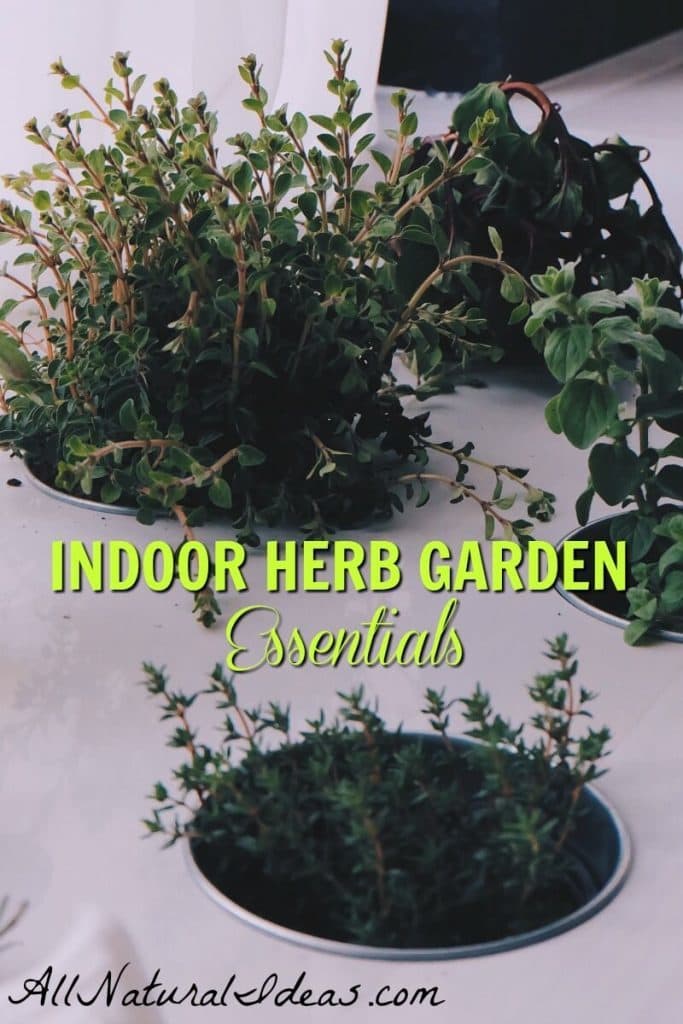

A vibrant herb garden is a culinary treasure trove, brimming with fresh, flavorful herbs for your kitchen. This comprehensive guide delves into everything you need to know about establishing, nurturing, and enjoying a thriving herb garden. Herbs, whether it’s basil, mint, or oregano, are an essential ingredient in many cuisines, adding depth and complexity to both sweet and savory dishes. Unfortunately, many aspiring gardeners encounter problems with improper planning or inadequate care, leading to disappointing yields. This article provides a detailed approach for developing your own herb garden, starting from initial selection to harvesting and preservation. This comprehensive guide will cover the different steps in the herb gardening journey, from choosing the right herbs to harvesting and storing them for later use.
Choosing the Right Herbs for Your Herb Garden
Assessing Your Space and Climate
When embarking on your herb gardening journey, careful consideration of your space and climate is crucial. Assess the amount of sunlight your chosen location receives, taking into account the sun’s angle and the hours of daily exposure. Understanding your climate’s typical temperature fluctuations and rainfall patterns is vital. These factors significantly influence the types of herbs that will thrive in your garden. For example, basil thrives in warm weather, whereas certain herbs, such as rosemary, tolerate colder temperatures.
Selecting Herbs Based on Your Culinary Needs
Your choice of herbs should align with your culinary preferences. Some herbs, like cilantro and basil, are staples in many cuisines, adding a burst of flavor to salads, sauces, and other dishes. Others, such as thyme and rosemary, are more often used as complements to main dishes. Consider your existing cooking habits and future culinary goals when making your selections. For example, if you frequently prepare Italian dishes, basil will be a valuable asset.
Considerations for Propagation and Maintenance
The method of propagation will also influence your selections. Some herbs are easily propagated from cuttings, while others may need specific soil or moisture conditions. For example, mint spreads quickly, making it suitable for areas where you don’t mind it spreading. Consider the size and maintenance requirements of the herbs when incorporating them into your garden plan. Different herbs require different levels of care.
Establishing Your Herb Garden
Choosing the Right Soil and Location
Soil quality significantly impacts herb growth. Well-draining soil that’s rich in organic matter promotes optimal root development and minimizes the risk of fungal diseases. Test the soil pH to ensure it is optimal for the herbs you choose. A sunny location with at least six hours of direct sunlight daily is ideal for most herbs. Consider the location of your garden and how the sun will position throughout the day. For example, a herb garden placed in a south-facing area will likely receive more direct sunlight than one in a northern spot.
Creating the Perfect Herb Garden Layout
Plan your herb garden layout considering the space you have available and the growth habits of each herb. Herbs with similar needs can be grouped together to simplify care. Research the mature size of the herb plants before planting to avoid overcrowding. Consider the potential for wind, as it can affect the growth and health of plants.
Planting and Caring for Your Herbs
Planting Techniques and Timing
Planting herbs at the right time of year is crucial. Research the specific planting times for each herb species in your region. Planting in spring and fall are suitable times. Consider planting small herb gardens in containers for flexibility and easier maintenance. Also, consider the specific needs of each herb for moisture and sunlight.
Watering, Fertilizing, and Pest Control
Regular watering is key, especially during dry spells. Water deeply but infrequently to encourage strong root growth. Use a slow-release fertilizer or compost to provide essential nutrients. Look for signs of pests and diseases, and implement pest control strategies promptly. Consider natural methods, such as introducing beneficial insects or using insecticidal soap, for minimizing the impact of pests on your plants.
Harvesting and Storing Your Fresh Herbs
Harvesting Techniques for Optimal Flavor
Harvesting at the optimal time ensures the highest quality and flavor. Many herbs are best harvested in the morning before the heat of the day sets in. Harvesting guidelines can differ slightly among herb species, so ensure you understand the right way to harvest your herbs. Consider carefully removing or trimming only the appropriate amount from the plant to encourage growth.
Drying and Freezing Herbs for Long-Term Storage
Drying and freezing are excellent methods for preserving fresh herbs for later use. Hanging herbs in a dry, dark, and well-ventilated place is an effective method for drying them. Freezing herbs is another option for extended storage. If you are unfamiliar with these techniques, research proper procedures for preserving herbs. Properly storing your herbs is crucial to maintaining their flavor and nutrients for months to come.
Enhancing Your Herb Garden Experience
Integrating Herbs into Your Culinary Routine
Integrating fresh herbs into your cooking routine is key to maximizing their flavor and benefits. Experiment with different herb combinations and cooking methods. Explore different uses and experiment with new recipes to discover the versatile uses of fresh herbs.
Creating a Relaxing and Aesthetic Herb Garden
Consider incorporating aesthetic elements into your herb garden. Create a calming atmosphere by including decorative elements or by implementing natural lighting. Enhance the aesthetic appeal of your herb garden. Consider creating a layout that is easy to walk around.
Tips for Success
Understanding Herb Varieties
Understanding the different types of herbs and their specific needs is crucial for successful cultivation. Research individual herbs and their characteristics to ensure optimal outcomes.
Monitoring and Addressing Plant Issues
Regularly monitor your herbs for any signs of disease, pests, or other problems. Address any issues promptly to maintain a healthy garden. Pay close attention to details such as soil health, moisture content, and the frequency of watering.
Creating a Relaxing Garden Space
Consider the aesthetic value of your herb garden. Add a bench, decorative items, or focal points to create a calming and visually appealing space. This will contribute to relaxation while tending to your herb garden.
Design and Organization
Planning the Garden Layout
Careful planning of your herb garden layout is crucial, considering the growth habits and requirements of each herb variety. Proper spacing ensures optimal growth and makes maintenance easier. Include labels for identifying each herb variety.
Utilizing Containers and Raised Beds
Utilizing containers or raised beds provides flexibility in your design. This allows herbs to be planted in areas that might not be ideal for planting directly in the ground, considering location and climate considerations.
Designing a Space for Harvesting
Designate a specific area within the herb garden for easy access during the harvesting process. This organized approach will simplify the harvesting procedure.
Maintenance and Care
Regular Monitoring of Health
Regular monitoring of the garden’s health is crucial for early detection of issues. Address any concerns such as pests or diseases promptly for a healthy garden.
Addressing Pests and Diseases
Effective pest and disease management is critical for a healthy herb garden. Implement preventive and corrective measures to minimize losses. Implement organic pest control methods wherever possible.
Proper Watering Schedules
Establish consistent watering schedules, ensuring that herbs receive the necessary moisture while avoiding overwatering. Research and adhere to the specific watering needs of each herb species.
Seasonal Care
Adjusting Watering as needed
Watering schedules should be adjusted based on seasonal changes, with reduced watering during cooler months. Monitor your garden consistently to ensure the appropriate amount of water reaches the roots.
Protecting Plants from Extreme Temperatures
Protect plants during extreme weather conditions, such as frost or heat waves. Understanding the needs of your herb garden is key to adapting to seasonal changes.
Fall and Winter Maintenance
Understand fall and winter maintenance routines and tasks. Implement proper pruning techniques to encourage growth and overall health during these seasons. This will help ensure healthy growth during the transition to new seasons. Consider covering delicate plants with protective materials during cold weather periods. Protect the garden from harsh weather conditions.
Frequently Asked Questions
What are the best herbs to grow in a herb garden, and why?
Choosing herbs for your garden depends heavily on your climate and preferences. Popular choices like basil, mint, and oregano are versatile and widely used. Consider your culinary needs, personal preferences, and any potential pest or disease issues when selecting your herbs. For example, if you enjoy Italian cuisine, basil is a must-have. If you’re focused on fresh teas or flavoring savory dishes, consider mint, thyme, or rosemary. Researching specific herbs and their suitability for your region is highly recommended.
How do I maintain a healthy herb garden? Proper watering, sunlight, and soil maintenance play vital roles.
Maintaining a healthy herb garden is essential to maximizing harvest yields. Understanding the specific needs of each herb species, as well as soil, water and sunlight, is important. Most herbs thrive in well-drained soil and a location with ample sunlight. Regular watering, especially during dry periods, is essential for healthy growth, and careful monitoring of moisture levels around the plants can help avoid over or underwatering. Additionally, address potential pest issues promptly. Prevention is key to maintaining a healthy ecosystem, including natural pest control strategies.
How can I use fresh herbs effectively in my cooking and other applications?
Fresh herbs add unmatched flavor and aroma to culinary creations, from simple salads to elaborate dishes. Freshly chopped herbs can enhance the taste of sauces, soups, and stews. Consider using herbs as garnishes, infusing them into oils and vinegars, or incorporating them into teas and infusions. Experiment with different cooking methods and discover the diverse culinary possibilities that fresh herbs provide. You can also preserve herbs by drying, freezing, or pickling them for later use. The possibilities are endless!
In conclusion, establishing a thriving herb garden requires careful planning, consistent maintenance, and a deep appreciation for the nuances of herbal cultivation. Choosing the right herbs for your space and preferences is key to success. Learning how to propagate, harvest, and store fresh herbs ensures you always have a supply of these culinary treasures. Whether you’re a seasoned gardener or a novice, these tips and techniques will help you create a vibrant and productive herb garden, delivering fresh, flavorful herbs to your kitchen and table year-round. Ready to embark on your herb gardening journey? Start by assessing your space and selecting suitable herbs for your needs. Visit our resources for more detailed guidance.